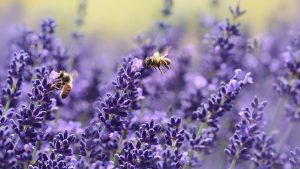Introduction
Lavender, with its beautiful purple flowers and enchanting fragrance, is a versatile and beloved plant. Whether you’re a seasoned gardener or just starting out, growing and caring for lavender can be a rewarding experience. In this article, we will explore the basics of cultivating lavender, including how to grow and care for this aromatic herb. We’ll also address common considerations and provide answers to frequently asked questions to help you achieve success in cultivating lavender.
About Lavender
Lavender (Lavandula) is a perennial plant that belongs to the mint family, Lamiaceae. It is native to the Mediterranean region and is renowned for its vibrant flowers, fragrant aroma, and numerous uses. Lavender is widely cultivated for its essential oils, culinary purposes, and decorative appeal. With over 450 known varieties, lavender offers a wide range of options to suit different climates and preferences.
How to Grow Lavender
2.1 Choosing the Right Variety: Select a lavender variety that is well-suited for your climate and growing conditions. English lavender (Lavandula angustifolia) and lavandin (Lavandula x intermedia) are popular choices, but there are many other options available.
2.2 Location and Soil: Lavender thrives in full sunlight, so choose a location that receives at least 6-8 hours of direct sunlight per day. The soil should be well-draining and slightly alkaline with a pH level between 6.5 and 7.5. If your soil is heavy or clay-like, consider amending it with organic matter to improve drainage.
2.3 Planting: Lavender can be propagated from seeds, cuttings, or purchased plants. Spring or fall is the best time to plant lavender. Space the plants 12-18 inches apart to allow for good air circulation and prevent fungal diseases.
2.4 Watering: Lavender is drought-tolerant once established, so it’s important not to overwater. Water deeply but infrequently, allowing the soil to dry out between waterings. Avoid wetting the foliage to prevent diseases.

2.5 Pruning: Regular pruning is essential to maintain the shape and health of lavender plants. Prune in early spring, cutting back around one-third of the plant’s height. This encourages new growth and prevents the center of the plant from becoming woody and unproductive.
How to Care for Lavender
3.1 Fertilizing: Lavender doesn’t require heavy feeding. A light application of balanced organic fertilizer in early spring is usually sufficient. Avoid excessive nitrogen, as it can promote excessive leaf growth at the expense of flowers.
3.2 Mulching: Apply a thin layer of organic mulch, such as straw or wood chips, around the base of lavender plants to conserve moisture, suppress weed growth, and insulate the roots during winter.
3.3 Pest and Disease Control: Lavender is generally resistant to pests and diseases, but it can occasionally face issues like root rot, powdery mildew, or aphids. To prevent these problems, ensure proper drainage, provide good air circulation, and monitor your plants regularly. Organic insecticidal soaps or neem oil can be used if pest infestations occur.
3.4 Winter Care: Lavender is hardy in many regions but can be susceptible to winter damage. In colder climates, provide protection by applying a layer of mulch around the base of the plant and avoid excessive moisture during the winter months.
What to Consider
4.1 Harvesting: Lavender blooms in summer, and the flowers can be harvested when they are in full bloom. Cut the flowers in the morning after the dew has dried, and hang them upside down in a cool, dark place to dry.
4.2 Uses of Lavender: Lavender has various uses, including crafting potpourri, sachets, essential oils, culinary creations, and medicinal remedies. Explore the possibilities and enjoy the benefits of this versatile herb.
Frequently Asked Questions (FAQs)
Q1: How long does it take for lavender to grow from seed?
A1: Lavender grown from seeds typically takes 2-3 years to reach maturity and produce flowers. Consider using cuttings or purchased plants for faster results.
Q2: How often should I water lavender?
A2: Lavender prefers dry conditions and should be watered deeply but infrequently. Watering once every 1-2 weeks should be sufficient, depending on your climate and soil type.
Q3: Can lavender be grown indoors?
A3: While lavender prefers outdoor conditions, it can be grown indoors if provided with bright light, good air circulation, and well-draining soil. Consider using grow lights to supplement natural sunlight.
Q4: How do I prune lavender?
A4: Prune lavender in early spring, cutting back about one-third of the plant’s height. Trim just above a set of healthy leaves and avoid cutting into woody stems.
Conclusion
Growing and caring for lavender can be a delightful experience for any gardener. By selecting the right variety, providing optimal growing conditions, and following proper care techniques, you can enjoy the beauty and aroma of lavender in your garden. Remember to consider factors such as watering, pruning, and pest control, and explore the various uses of lavender to make the most of this versatile herb. With a little patience and attention, you’ll be rewarded with a thriving lavender garden that adds beauty and fragrance to your surroundings.



